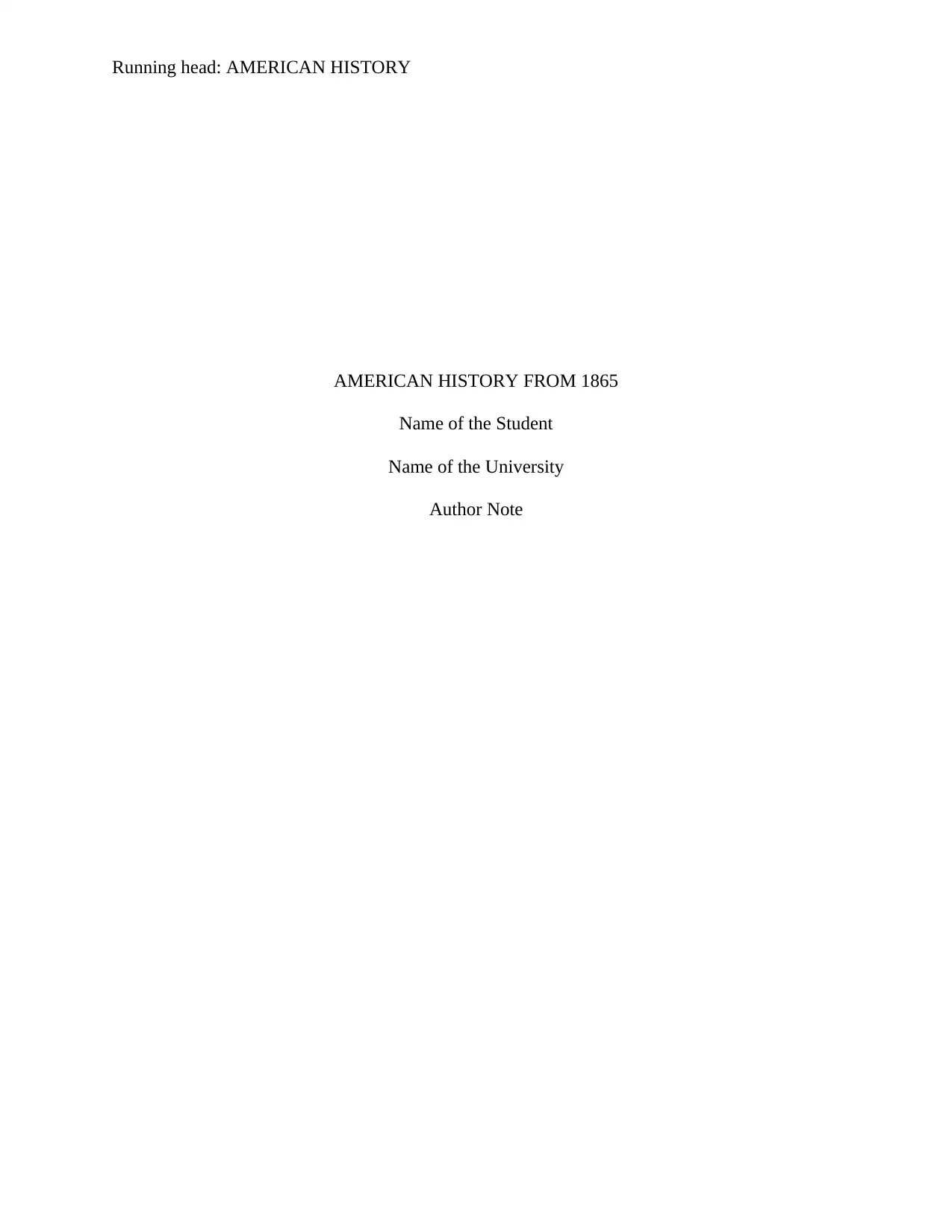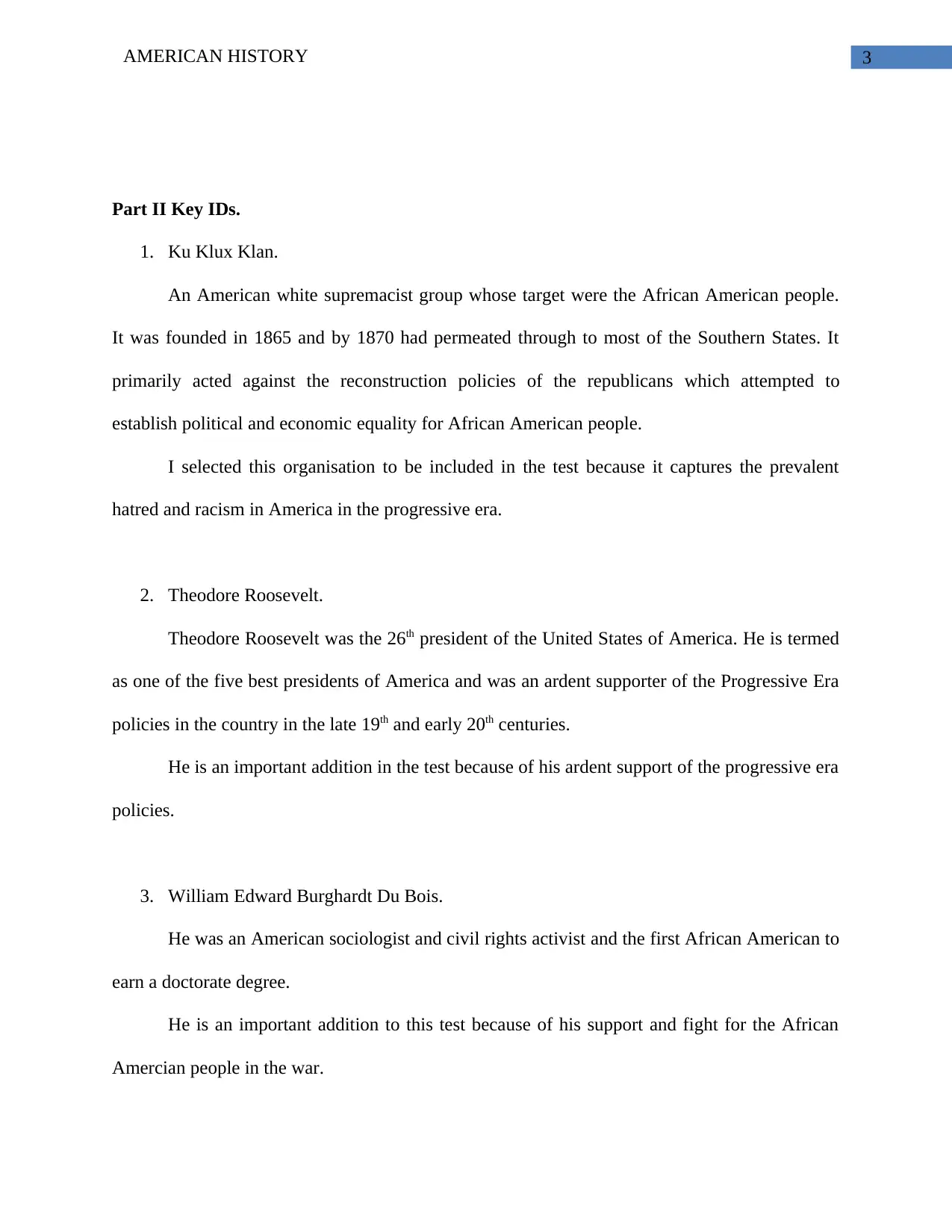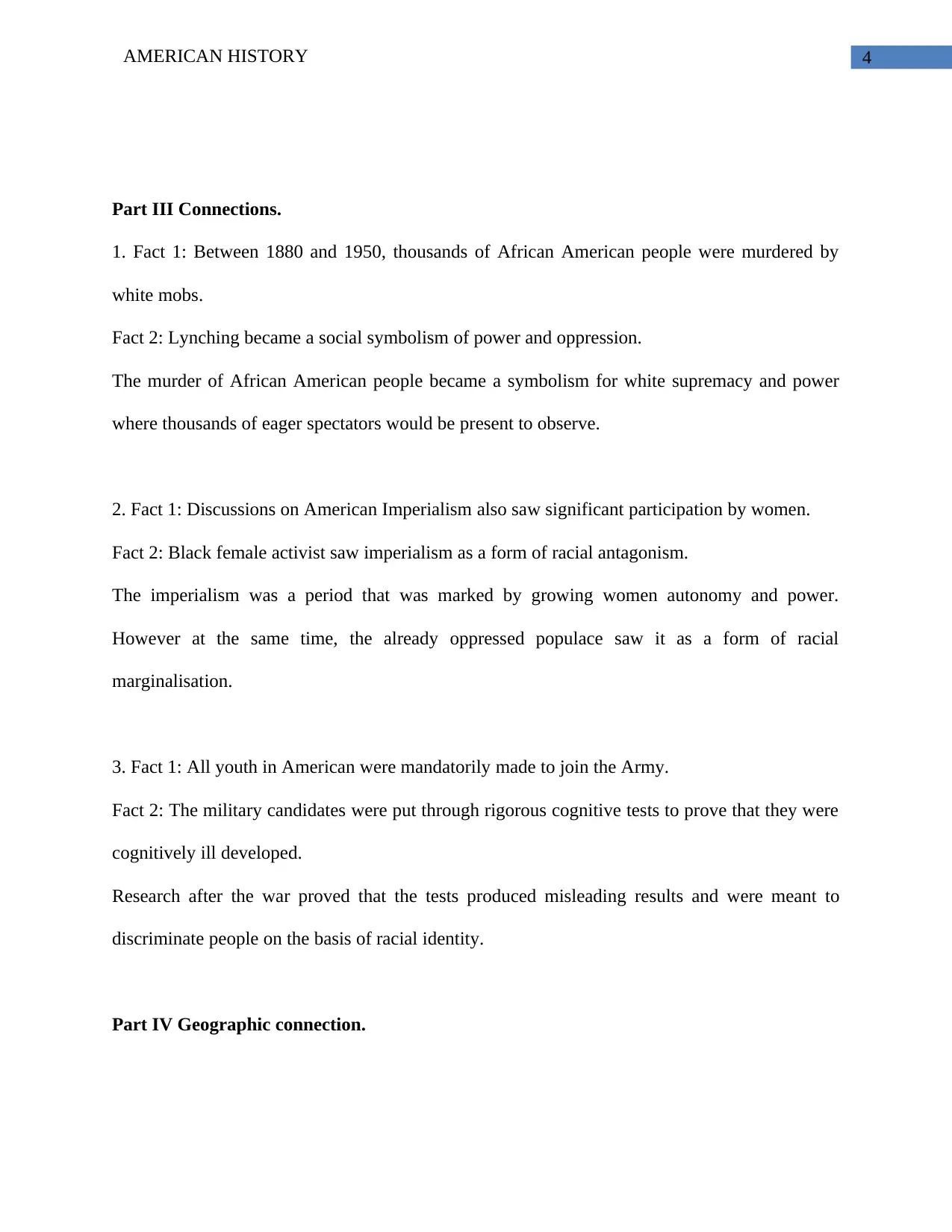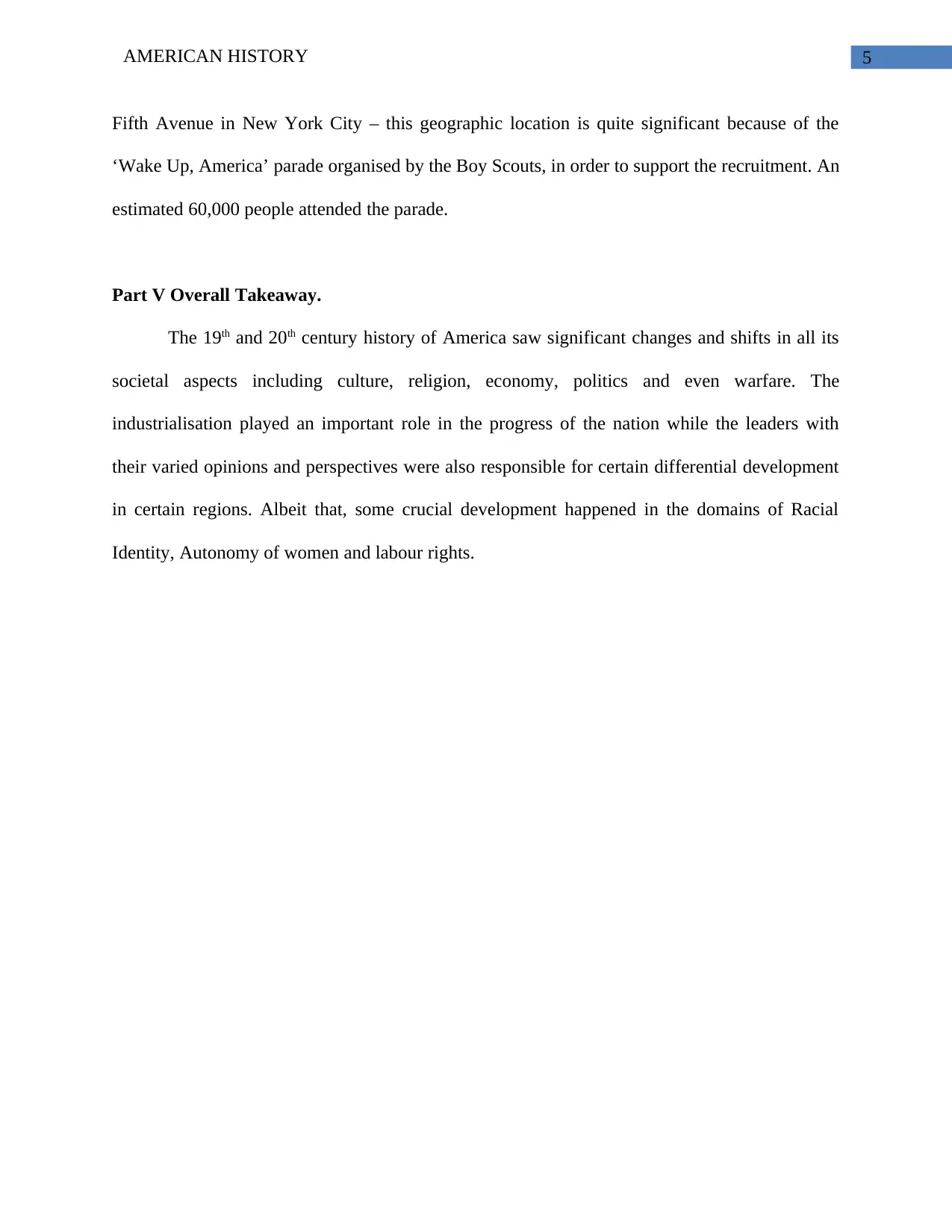American History Midterm Assignment: Units 1 & 2 Analysis
VerifiedAdded on 2022/08/15
|6
|1024
|15
Homework Assignment
AI Summary
This document presents an American History midterm assignment focusing on the 19th and early 20th centuries. The assignment is divided into several parts, including multiple-choice questions designed to test understanding of key historical facts, such as changes in American society, Theodore Roosevelt's leadership, the Progressive Era, and the Conscription Act. Each question is accompanied by an explanation of its importance and the rationale behind the correct and incorrect answers. The assignment also includes key IDs, requiring the student to define and analyze significant historical entities like the Ku Klux Klan, Theodore Roosevelt, and W.E.B. Du Bois. Furthermore, the assignment explores connections between historical facts, examining themes such as white supremacy, women's roles in imperialism, and the impact of military conscription. A geographic connection to Fifth Avenue in New York City, linked to a recruitment parade, is also included. The overall takeaway emphasizes the profound transformations in American society during this period, highlighting the impact of industrialization, leadership, and developments in racial identity, women's autonomy, and labor rights.
1 out of 6








![[object Object]](/_next/static/media/star-bottom.7253800d.svg)